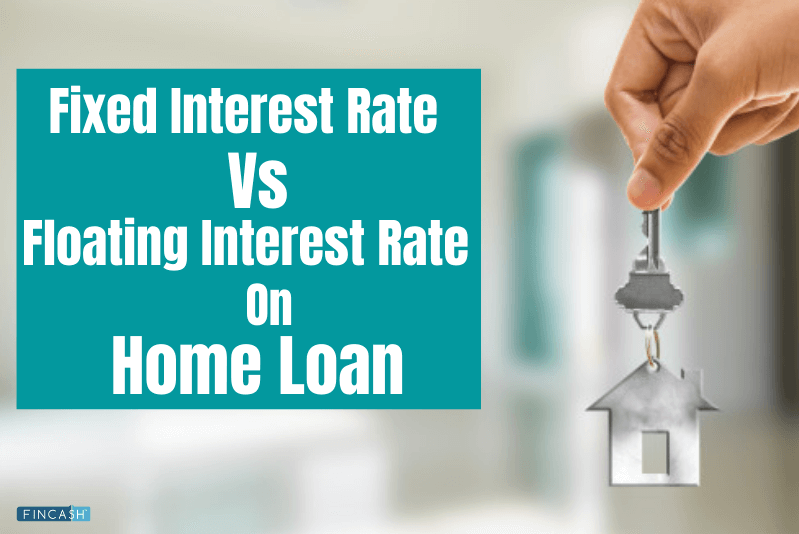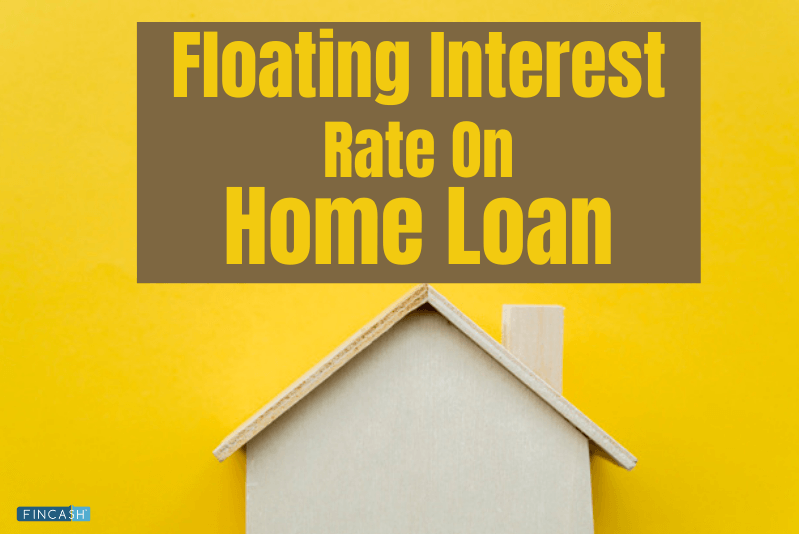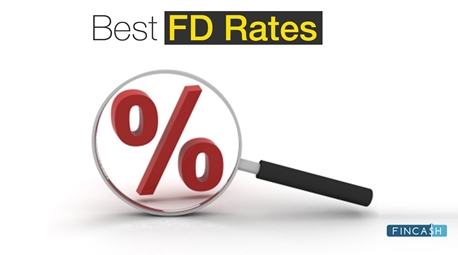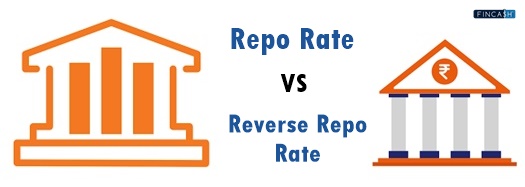
Table of Contents
Fixed-Rate of Interest Vs Floating Rate of Interest- Which is Better?
After much debate on the location and area of convenience, Satish and his wife Mihika finally planned to buy an apartment in suburban Mumbai. While Satish was looking for travel convenience, Mihika was looking for instant access to all house-hold necessities.

The couple decided on a 2-BHK apartment that fit both their expectations. Both are extremely excited about this huge venture. However, they are yet to make a big decision, ie., financing, so ended up on taking a Home Loan. While Satish feels taking a home loan based on a Fixed Rate of Interest would be a safer option, Mihika feels a Floating Rate of Interest is much better.
Satish and Mihika are in a fix and are trying to figure out the best option to choose and opt for a home loan.
Let’s help them decide on the best interest rate option by looking at the differences between the fixed rate and Floating Rate of interest on the home loan.
What is Fixed Rate of Interest & Floating Rate of Interest?
Fixed-rate of interest is exactly as it sounds- it’s a fixed rate. This means that the rate of interest will remain unchanged on the loan you have opted for. This rate of interest remains fixed for the tenure of the loan or at least a part of the tenure.
The floating rate of interest is when the interest rate is subject to change over the course of the loan opted for. These changes occur due to the difference in Market rates. This is also known as ‘adjustable rates’.
Talk to our investment specialist
Fixed-Rate of Interest Vs Floating Rate of Interest
1. Market Conditions
A fixed-rate of interest is not affected by the fluctuations in the financial market. The interest rate remains constant throughout the loan tenure. Whereas, a floating rate of interest is affected by changes in the financial market. Therefore, the rate may change based on market fluctuations.
2. Rate of Interest
The fixed rate of interest is higher than the floating rate of interest. Fixed-rate of interest is usually 1% to 2% higher than the floating rate of interest.
3. EMI
In case of a Fixed Interest Rate, the monthly EMI remains constant throughout the loan tenure. This is due it the fact that the interest rate is fixed in nature. When it comes to floating rate of interest, the EMI is affected by changes in the interest rate or MCLR.
4. Budget
With a fixed rate of interest, you can plan your budget and how much you need to cash out every month and also manage your monthly expenses. Due to fluctuation in market conditions, the interest rate if affected which in turn leads to changes in EMI every month. This also makes budget planning a little difficult.
5. Nature of Interest Rate
Fixed-rate of interest provides security because it is constant in nature. Market changes do not affect the loan interest rate.
The floating rate of interest allows increased savings. This is because changes in the market affect the interest rate. If market records a downward trend, the interest rate automatically dips and you will have to cash out less money in EMIs and total repayment.
6. Loan Term
Fixed-rate of interest is advisable for short or medium-term loan period like 3-10 years. This is because the changes in market conditions don’t affect the interest rate. If the market undergoes Recession, you will still have to pay the fixed rate of interest. This will take away the advantage of cashing out a lesser amount of money.
The floating rate of interest is advisable for long term period like 20-30 years. Since the market keeps changing, a downward trend would be beneficial due to changes that will occur in total repayment.
7. Penalty on Prepayment of Loan
With a fixed rate of interest, you will have to pay if you are prepaying the loan amount. There are no prepayment charges with a floating rate of interest.
8. Age Group
Fixed interest rate is suitable for people aged 50 years and above. Floating rate of interest is suitable for people aged 20 years and above.
| Fixed Rate of Interest | Floating Rate of Interest |
|---|---|
| Fixed rate of interest remains unaffected by changes in market conditions | Floating rate of interest is affected by changes in market conditions |
| Fixed rate of interest is higher | Floating rate of interest is lower |
| Monthly EMI remains constant in case of fixed rate of interest | Monthly EMI changes as per interest rate or MCLR |
| You can easily plan a budget for the whole of loan repayment tenure | You have to be flexible with budget planning |
| Provides security | Allows increased savings |
| This is suitable for a loan period of 3-10 years | This is suitable for a loan period of 20-30 years |
| Prepayment charges applied | No prepayment charges |
| This is suitable for individuals aged 50 and above | This is suitable for individuals aged 20 and above |
Fixed-Rate of Interest Vs Floating Rate of Interest
Well, both the interest rate options are the best. They are articulated in such a way that will suit people’s individual’s needs, preference and even financial profile. You can re-read everything mentioned above and make a choice as to which will suit you the best. If you are a risk-taker and are below the age of 50, you can opt for a floating rate of interest. If you are under the age of 50, but are looking for security when it comes to planning finances, you can go for a fixed rate of interest on home loans.
It is totally your choice!
Save for a Home the SIP Way!
If you don’t wish to opt for a home loan, you can still save money and buy the house of your dreams with the Systematic Investment plan (SIP). SIP gives you the freedom to save money regularly with ease. You can plan your budget and savings with SIP and also expect great returns. Save monthly and buy your dream home with SIP today!
Fund NAV Net Assets (Cr) Min SIP Investment 3 MO (%) 6 MO (%) 1 YR (%) 3 YR (%) 5 YR (%) 2023 (%) SBI PSU Fund Growth ₹29.2899
↑ 0.57 ₹4,149 500 0.4 -11.2 -3 27.2 29.9 23.5 HDFC Infrastructure Fund Growth ₹42.756
↑ 0.81 ₹2,105 300 -3.4 -11.9 -1.1 26 35.5 23 Invesco India PSU Equity Fund Growth ₹56.39
↑ 1.07 ₹1,047 500 -1.3 -13.8 -2.4 25.7 28.3 25.6 ICICI Prudential Infrastructure Fund Growth ₹173.11
↑ 3.09 ₹6,886 100 -3.3 -11.8 0.4 25.5 38 27.4 Franklin India Opportunities Fund Growth ₹224.029
↑ 4.86 ₹5,517 500 -7.6 -12 7.6 24.9 31.8 37.3 Nippon India Power and Infra Fund Growth ₹307.974
↑ 6.25 ₹6,125 100 -6.6 -16.5 -3.2 24.9 35.6 26.9 Franklin Build India Fund Growth ₹125.543
↑ 2.56 ₹2,406 500 -5.7 -13.1 0.2 24.3 34 27.8 Motilal Oswal Midcap 30 Fund Growth ₹88.0095
↑ 1.26 ₹23,704 500 -16.7 -18.9 7.8 22.9 34.4 57.1 DSP BlackRock India T.I.G.E.R Fund Growth ₹278.387
↑ 6.61 ₹4,465 500 -8.9 -19.3 -0.2 22.7 34.3 32.4 IDFC Infrastructure Fund Growth ₹44.791
↑ 1.00 ₹1,400 100 -8.6 -18.3 -1.4 22.3 36 39.3 Note: Returns up to 1 year are on absolute basis & more than 1 year are on CAGR basis. as on 11 Apr 25
Funds mentioned are considering best CAGR returns for over 3 years and fund having atleast have market history (Fund age) of 3 year and have minimum 500 Crore of asset under management.
All efforts have been made to ensure the information provided here is accurate. However, no guarantees are made regarding correctness of data. Please verify with scheme information document before making any investment.












